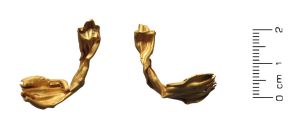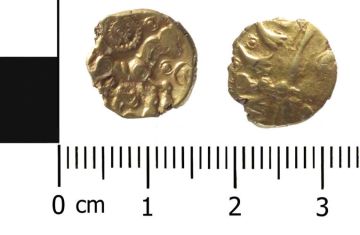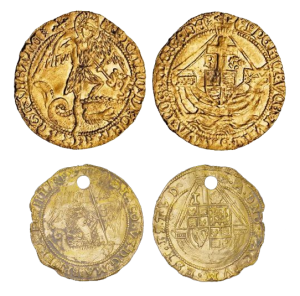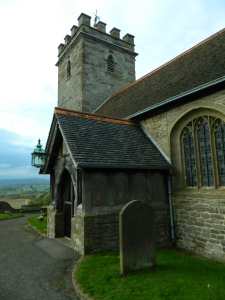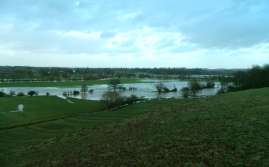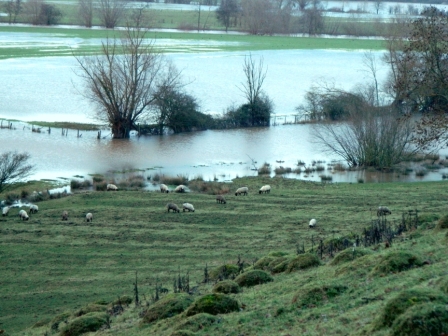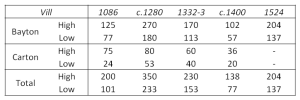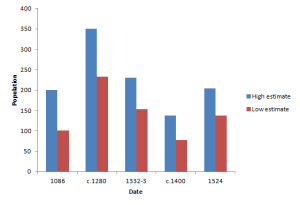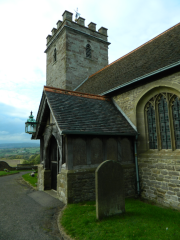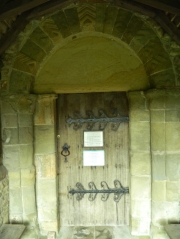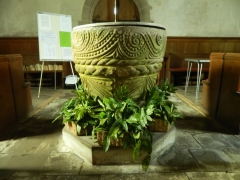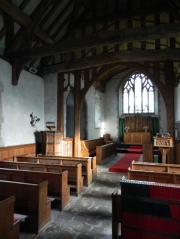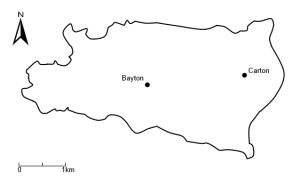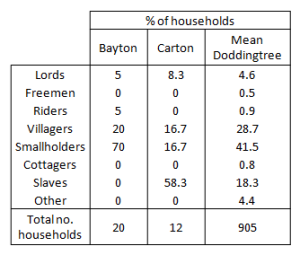Everybody loves a good map.
As part of my PhD thesis I’ve recently been making a bunch of national-scale distribution maps, comparing hoard findspots to other contemporary distributions – most obviously that of wealth, usually reflected in lay and ecclesiastical tax assessments. Britain, and England especially, is pretty well blessed with evidence of this sort. On the church front we’re definitely blessed by the University of Sheffield’s recently-beautified Taxatio Online database, the fruit of almost three decades’ work digitising Pope Nicholas IV’s 1291/2 tax assessment of English and Welsh benefices. The significance of this assessment has been justly recognised by historians for more than a century, not least because it remained the basis of parliamentary and convocation grants of the clergy well into the 16th century.[i]
In the course of converting this data into something mappable for my thesis, I was itching to check out what the Taxatio had to say about wealth – at least, of the church – in Bayton and its surroundings in the later Middle Ages. The obvious route was to look at the spatial distribution of tax assessed wealth using GIS mapping. The process from web database to pretty map is fairly smooth, but for the curious here’s a step-by-step walkthrough. Thanks to the nifty ‘Browse by County’ function it’s straightforward enough to extract data for the three counties in the study area – Herefordshire, Shropshire and Worcestershire – through a simple cut-and-paste job in Excel. At this stage a little data cleaning was necessary to clarify county attributions. Since Taxatio Online groups benefices by historic county, reattribution is necessary where modern county boundaries have shifted or where an attribution is otherwise historically incorrect; Bayton, for instance, has been historically a member of Worcestershire’s Doddingtree hundred, so it’s a little odd to find it chucked in as part of Shropshire. This complete, each benefice can be broadly spatially referenced via batch geocoding, and therefore importable into the GIS package of your choice. Unsurprisingly there are a couple of benefices listed which don’t yield an easy coordinate – some do not exist in the present day – and therefore some manual attributions were necessary, with the remainder given a quick double-check to make sure there were no obvious howlers in the spatial data. All in all this yielded coordinates for 535 benefices in the study area – not bad going!
Spatial bits thus recorded, the next main task was converting the assessment values – which Taxatio Online records as a £ s. d. value in a single cell – to a more uniform number amenable to analysis. The obvious solution is to convert everything into d. values; thus the assessment for Kinlet (Salop) changes from £ 10. 0s. 0d. to the simpler 2400d. A bit of Excel wrangling later and we have a .csv file ready to import as a vector in QGIS. All that was left was to load it up, do some styling, stick on top some boundary vectors and, hey presto, we have a map!
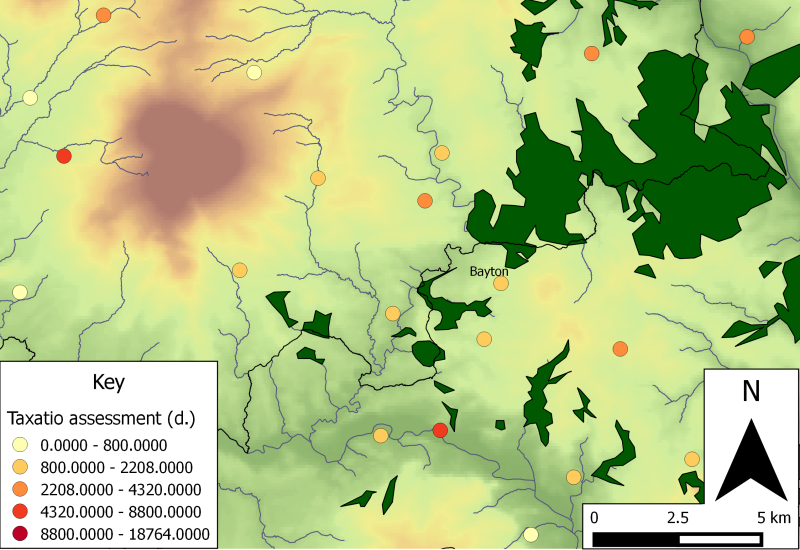
Taxatio assessments for NW Worcs/SE Salop in the later 13th century; the redder the dot, the higher the tax value ( Contains Ordnance Survey data © Crown copyright and database right 2014 and data available from U.S. Geological Survey).
Chickenpox resemblance aside, the map gives some interesting glimpses of the distribution of church income in the region; since much of this was based on farmland tithes, it should offer some hints – albeit imperfect – to broader distributions of agrarian wealth in the region. What’s notable is the broad uniformity in which most of the benefices – including Bayton – fit, characterised by lower rung tax assessments of £3 6s. 8d. to £9 4s. 0d. Poorer, certainly, than some of their cousins in the fertile arable of the Vale of Evesham, but by no means impoverished. Presumably the degree of uniformity reflects shared topographic characteristics conditioning local agrarian regimes across the area, but a note of caution against environmental determinism is given by the benefices at the foot of the Clee Hills – which includes Bitterley (Salop), whose value falls in the top 40% of assessed benefices, and Silvington (Salop), which was exempted by merit of its low income.
At the top end of the spectrum we can see a correlation between benefices with high tax assessments and the presence of a market. This is most obvious at Lindridge (Worcs), but can be observed beyond the map’s limits at Stottesdon (Salop), Kidderminster and Tenbury (Worcs). A link between the sites of formal marketplaces and areas of relative wealth comes as no surprise, and perhaps this is why the high values at Cleobury Mortimer (Salop) and Rock (Worcs) are so intriguing. Cleobury Mortimer was granted borough status in 1362, at which point we can presume it also acquired formal market rights, as Rock was to receive on 10 May 1328. Could the high tax assessments in 1291/2 indicate late 13th century markets formalised by subsequent charters? Excavations at Rock Farm offer a snippet of supporting evidence, yielding a medieval ceramic assemblage of 13th century and later date composed of both local and Malvernian wares produced c. 20 miles south east at the Hanley Castle potteries. Could some of this have arrived via the cross-county network of rural markets?[ii]
In itself the map raises a bunch of other questions. How much does the Taxatio reflect variations in ecclesiastical wealth alone, without taking into account the holdings of laypeople? Come to think of it, given the much-debated connections between population and wealth in this period, to what extent does the map inform us of broader issues of land, people and wealth during the ‘long’ 14th century? One route would be to map population and wealth as reflected in near contemporary lay tax records – most obviously the published 1327 lay subsidy returns for Shropshire and Worcestershire. Another project for another day?
[i] R. Graham, ‘The taxation of Pope Nicholas IV’, English Historical Review 23:91 (1908), 434
[ii] D. Hurst, “The finds,” in Evaluation at Rock Farm, Rock, ed. L. Fagan (Worcester: Hereford and Worcester County Council, 1993), 15.


